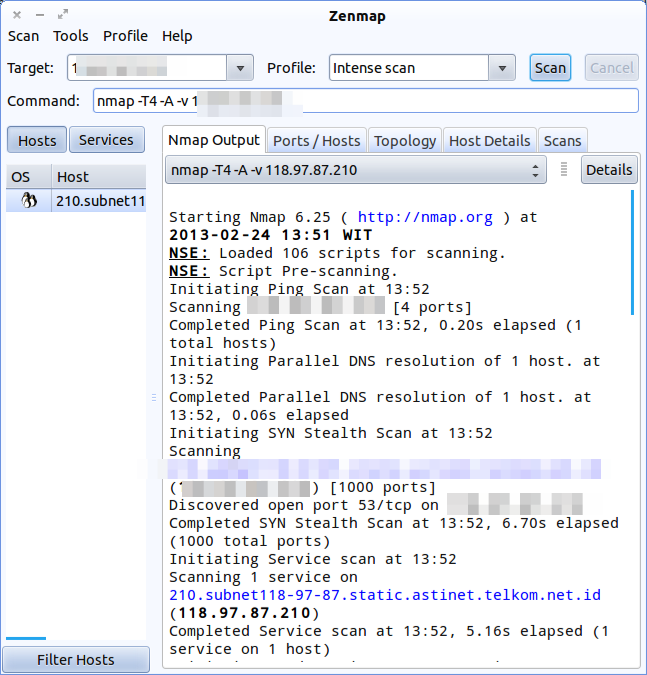

Within the Profile menu, next to the Scripting submenu you can find the Target tab which allows to define targets in a variety of ways.


Next to the Ping tab, on the Scripting submenu tab you can access the NSE (Nmap Scripting Engine) to add plugins to your scan such as vulnerability scan, bruteforce, traceroute additional features and more. Next to the Scan tab submenu you can find the Ping submenu to enable or disable different discovery methods or probes. Profile: this menu allows to create and edit profiles with predefined options, here you can define the type of Scan on the second TAB after the Profile submenu tab to choose between TCP,SYN, ACK FIN, idle scan, OS detection and others. Tools: this menu allows to compare scan results, search among results and filter hosts. Scan: from this menu you can save and open scan results. Zenmap interface is very intuitive, these are the options of the top menu: Raw packets are sent through a lower level packet restricted for non-root users.Īlso when launching Zenmap from the graphical interface you’ll find the option to run it as root as shown two images above. When launching Zenmap, or Nmap, as an unprivileged user you’ll be limited to execute scans requiring raw packets.
#Zenmap ubuntu how to#
While it is easy to use for users who know the theory behind networking some users find difficult or don’t like to interact with the terminal or console, this tutorial explains how to install and use Zenmap, the Nmap graphical interface, a friendly interface for users unfamiliarized with terminals or even MS-Windows users, additionally when using Zenmap it will display the commands used, so using Zenmap would be a good introductory way to learn to use it through the console. Nmap works by analyzing packet responses contrasting them to rules and standards of protocols. But if we start a port scan of that host, the “Ports/Hosts” tab will be populated with the new information.Įnter one of the hosts in your network into the “Target” field, select “Regular scan” from the Profile drop-down list and click “Scan”.Nmap is among the most useful tools for network administrators to diagnose network problems, security auditing and even offensive security, often called the “Swiss Army knife” for sysadmins and hackers Nmap constituted a revolutionary tool which until today leads the market. If you select a host from the list on the left and then click on the “Ports/Hosts” tab, there will be no information. This means the more scans you do, the more information is available.Īfter a Ping scan, there is no information about the open ports. Each one of these tabs shows more information about your network and the information presented is accumulative. Above the output pane is a set of tabs: “Nmap Output”, “Ports/Hosts”, “Topology”, “Host Details” and “Scans”. The result will look something like this:ĭown the left side of the window, you will see a list of the devices (hosts) found on your network and on the right, the output from the nmap command.


 0 kommentar(er)
0 kommentar(er)
